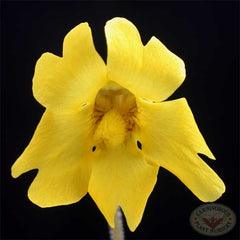
Growing Tips for Temperate Butterworts



Temperate Butterworts
Soil: 3:1/2:1 peat:sand:perlite.
Container: 4" plastic pot.
Watering: Evenly moist, drier in Winter.
Light: Partial Sun.
Temperature: Temperate: Zones 3-6, Warm Temperate: Zones 6-10.
Humidity: Medium.
Location: Windowsill, terrarium, greenhouse, outdoor bog garden.
Dormancy: Yes.
Habitat
Temperate Butterworts typically grow in damp peaty soils, and benefit from the dappled light provided by accompanying grasses and vegetation. Northern species form winter buds, called hibernacula, which resemble tight little flower heads. Southern species, living in Winters that rarely freeze, develop short, stout winter leaves, but otherwise similar to summer leaves. They are common Carnivorous Plants in pocosins, and fens. Most Temperate Butterworts grow in association with Sphagnum Moss.
Culture
Many butterworts thrive in a a looser, more open soil mix of peat, sand, and perlite. The ratio is not critical. Use mineral-free water and keep the soil consistently moist in the summer and cooler and drier, but still slightly damp in the winter. The tray method works very well. Stand the pot in a tray or saucer and keep about 1/2 - 1” (1.25-2.5cm) of water in it at all times during the growing season. Butterworts prefer partial sun and develop their best colors in bright indirect light. Most Temperate Butterworts do quite well at room temperature.
Propagation
Temperate Butterworts can be propagated from leaf pulls, but this is not reliable. Seeds can be slow and need steady conditions. Some need stratification (cool, damp winter). Tissue culture works well for clones.
Dormancy
Northern Temperate Butterworts require dormancy in the Winter and cold temperatures near freezing. These will develop a winter bud or hibernacula which may be cleaned and stored in damp peat in a refrigerator. Southern species from warm temperate zones, will experience winter rest with smaller leaves, rather than full dormancy with a hibernacula. These plants should be kept somewhat cooler and drier, but the soil should remain evenly moist.
Feeding
Butterworts are excellent at trapping small prey all on their own. Let them catch their own food. They only need to feed a few times a month, and do not require daily feeding. Plants grown indoors or in a terrarium will benefit from supplemental feedings using wingless fruit flies or other very small insects.
Other Considerations
Many butterworts will readily propagate from leaf cuttings, though Temperate Butterworts may be less reliable. Tear the leaf away from the stem with a small section of the stem still intact. Place the leaf on milled sphagnum that is kept moist and cover with a clear lid to keep the humidity high. Propagation is best done in the early Spring.
